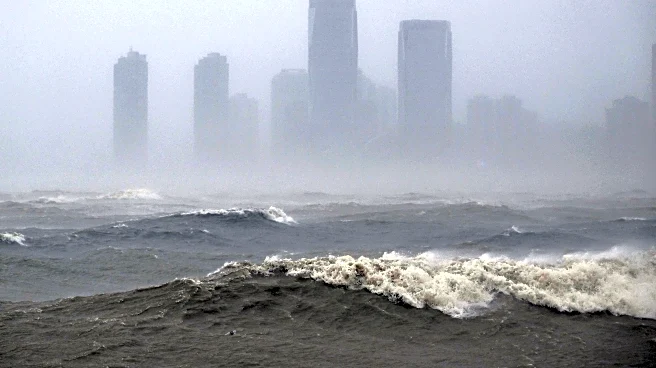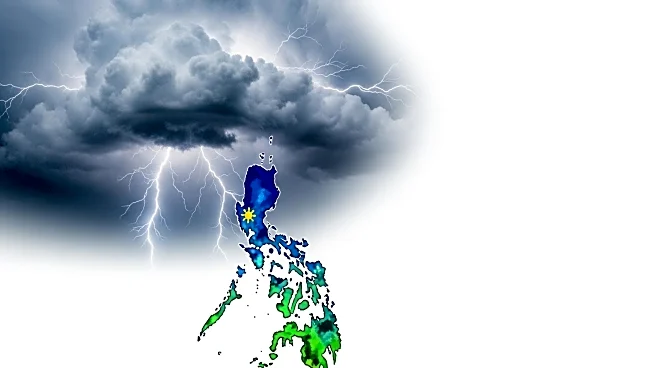What's Happening?
Typhoon Matmo made landfall on the southern coast of China, impacting the island province of Hainan and forcing the evacuation of approximately 350,000 people. The storm brought torrential rain and damaging winds, particularly affecting areas between Wuchuan in Guangdong and Wenchang in Hainan. As a result, ferry services were suspended and flights were canceled at Haikou Meilan airport. Matmo, the 21st typhoon of the year, had sustained wind speeds of 94mph and caused significant rainfall in Chongzou and Qinzhou. The city of Nanning also experienced high rainfall totals. The storm prompted China's highest-level red alert, leading to disruptions in Zhanjiang, where businesses, transport links, and roads were shut down. In Hong Kong, 100 flights were affected, with 30 cancellations. As Matmo moves inland towards Cao Bang province in Vietnam, it is expected to weaken into a tropical depression but will continue to bring heavy rainfall, raising the risk of flooding and landslides.
Why It's Important?
The impact of Typhoon Matmo highlights the vulnerability of coastal regions in China and Vietnam to severe weather events. The evacuation of hundreds of thousands of people underscores the potential for significant human and economic disruption. The storm's effects on transportation and infrastructure could have lasting impacts on local economies, particularly in areas heavily reliant on tourism and trade. Additionally, the heavy rainfall and risk of flooding pose threats to agriculture and food security in affected regions. The situation also emphasizes the importance of effective disaster preparedness and response strategies to mitigate the impact of such natural disasters.
What's Next?
As Typhoon Matmo continues to move inland, authorities in Vietnam and China are likely to focus on managing the aftermath of the storm, including addressing flooding and landslide risks. Efforts to restore transportation and infrastructure services will be crucial in the coming days. Additionally, the storm's progression towards Yunnan province in China may require further alerts and preparations to handle potential heavy rainfall. The broader implications for regional disaster management strategies may lead to increased investment in infrastructure resilience and emergency response capabilities.
Beyond the Headlines
The occurrence of Typhoon Matmo and similar weather events may prompt discussions on climate change and its role in intensifying storms. The increased frequency and severity of such events could lead to long-term shifts in policy and investment towards sustainable infrastructure and climate adaptation measures. Furthermore, the storm's impact on densely populated areas highlights the ethical considerations of urban planning and development in vulnerable regions.












